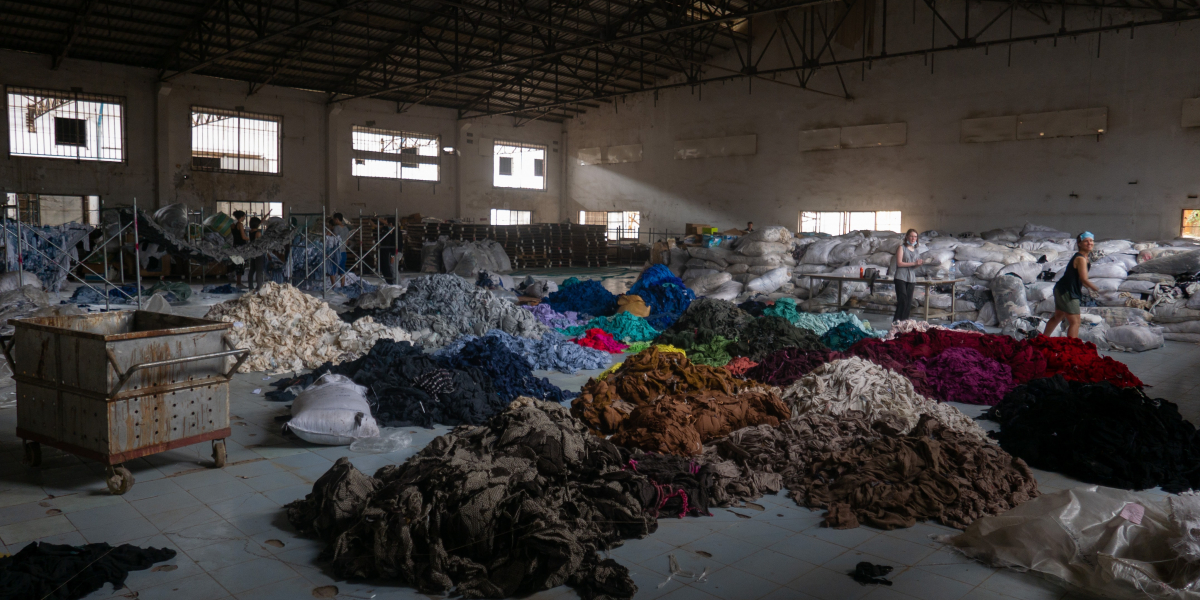
December 7, 2021
Guest post by Pedro Cybis and Sophie Bernard
One of the easiest disposal strategies available to the fashion industry is incineration of their unsold merchandise. Fashion brands often end up advertising the incineration of their unsold collections as a sustainable initiative, given that certain countries recover energy through the process. However, better disposal alternatives should be prioritized by businesses and supported through public policies. Our recent Smart Prosperity Institute Working Paper explored exactly this: why do firms incinerate their deadstock and what public policies could help them move towards better alternatives?
Managing inventories in the fast-paced and complex supply chain of the fashion industry is a challenge, and miscalculations are often blamed as the main cause for products being leftover at the end of a selling season. However, for decision makers within the fashion industry, whose risk preference is to avoid revenue losses, excess stocks are a deliberate strategy. Indeed, larger safety inventories allow retailers to avoid shortages and help retain customers’ loyalty. Paradoxically, a key issue for this type of firm is the low value that fashion apparel holds once the trend fades. Retailers find themselves burdened with remaining inventory occupying store and warehouse space needed for new collections. These concerns are particularly critical for firms specializing in so-called fast fashion.
Fast fashion brings trendier looks to stores for affordable prices. However, it has sped up trend cycles and lowered the quality of clothing overall, which, together contributed to rapid product obsolescence. Fast fashion has intensified the consumption of apparel and the repeated need for new collections. As a result, fast fashion contributes to the industry’s environmental impact by accelerating production and clothing’s end-of-life.
Environmental damage from production contributes 60% to 80% of an apparel’s lifecycle impact, with the impact varying from one type of fibre to another. Polyester, which is a synthetic fibre made of PET (polyethylene terephthalate), represents over half of the global fibre market and is an important contributor to greenhouse gases emissions. The second most frequently used fibre is cotton, which needs vast amounts of land and water for cultivation and processing. Overall, the main environmental impacts associated with clothing are caused by greenhouse gas emissions from non-renewable energy sources and water use from dyeing and finishing treatments. An increase in production, even if optimized to avoid waste in the processes, exacerbates the already significant impact of these stages by unnecessarily enlarging production volumes.
Furthermore, there is a lack of sustainable alternatives for disposing of clothing, either worn or new. The main options available are landfilling, incineration, recycling, and second-hand markets. Landfilling and incineration are end-of-life options that, together, represent 73% of post-consumption treatments. Recycling accounts for only around 12%. Recycling operations are limited by financial and technical barriers as recyclers need better sorting at lower costs to have a valuable output - a critical factor for their scalability.
Second-hand markets are today’s retailers’ best option to extend clothing life duration. Some retailers give away their remaining stocks as corporate donations to charities and NGOs that resell them. In Canada, this is even encouraged through tax credits. However, the global second-hand market is saturated, meaning clothing intended for reuse holds little value. Coupled with the high costs of collecting and sorting, reuse stakeholders have low margins to scale up. In addition, given the unsuitability of the current manual sorting practices for recycling processes, landfills become the main solution for clothing unwanted by firms and unfit for reuse. With fast fashion increasing clothing’s obsolescence, it only intensifies the landfill rate.
Furthermore, the industry is heavily globalized, which creates an imbalance between consumer countries and producer ones, displacing the environmental damage of production from clothing consumed worldwide. Likewise, end-of-life impacts shift from consumer regions, like Europe and North America, to countries relying on second-hand imports.
Solutions to reduce the current rate of new clothing production include rethinking our consumption and public policies. However, the effects of individual efforts are very limited compared to the potential effect of public policies. Potential policies could focus on regulation of new products, promotion of sustainable business models and support for alternative disposal strategies. Policymakers should strive to design and implement a complementary suite of such incentives and tools. Inspiration could be drawn from France’s implementation of a mandatory extended producer responsibility law constraining the destruction of unsold clothing. Such programs can fund initiatives to reduce identified systemic barriers to the fashion industry’s transition towards sustainability.
This project, titled “Fast Fashion: Why Firms Incinerate Deadstock, and Public Policies”, was funded in part by the Economics and Environmental Policy Research Network (EEPRN) and the Greening Growth Partnership, with funding awarded through Smart Prosperity’s 2020 Call for Proposals. Further details of this and other funded projects are available here.
To learn more about this project’s findings, check out the full Smart Prosperity Institute working paper on Fast Fashion: Why Firms Incinerate Deadstock, and Public Policies.